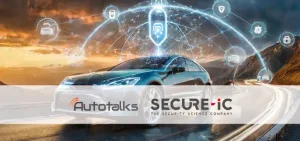By Onn Haran
Emergency vehicles are involved in road accidents more than other vehicle type. In Germany, during a five-year span (2014-18), there were 597 recorded ambulance accidents, resulting in 453 injuries and 28 fatalities. In the U.S., there were 143 fatalities in the same time frame.
In 2021 alone, a total of 198 lives were lost in the U.S. in emergency vehicle accidents.
The overall annual cost is estimated at $35 billion, and that excludes the societal collateral damage.
Luckily, there is a solution. V2X, vehicle-to-everything communication, was created to allow vehicles, infrastructure and all other road users to directly communicate with each other to prevent road accidents.
A vehicle transmits 10 times per second its location, speed and heading.
Nearby vehicles get a full picture of the surrounding risks even without visibility. In contrast to cloud communication, direct communication assures network availability, scalability, and low latency for getting the most updated location of a vehicle bursting into an intersection.
With V2X, an emergency vehicle will be able to influence the traffic light phase. A smart intersection uses cameras or lidars to detect road users without V2X, such as pedestrians, and transmits their information via V2X. An emergency vehicle will be notified by a smart intersection when a pedestrian crosses the intersection.
V2X-equipped vehicles will be able to detect an approaching emergency vehicle, giving them plenty of time to clear the road.
Larger vehicle pool needed
The efficacy of V2X safety protection is realized only when a majority of vehicles are integrated into the V2X network. This reduces the appetite for V2X in the early market stages. Conversely, the use case of emergency vehicles can provide significant value at the initial stages of the transition, saving lives while helping to accelerate the V2X market introduction.
Adding V2X to emergency vehicles is simple and non-invasive and is done by leveraging the lightbar. A cabin display shows the safety alerts and activates V2X. There are about 400,000 emergency vehicles in the U.S. The one-time installation cost is $1.2 billion, assuming lightbar replacement costs $3,000. This is a small fraction of the yearly damage.
Adding V2X to vehicles can mitigate most of the accidents involving two road users. However, consumers have little motivation to pay for V2X when detection is limited to the few vehicles with V2X. In contrast, clearing the road for an emergency vehicle motivates V2X deployment.
Given the current market situation, the regulators should actively encourage V2X deployment — with either mandate or incentives, such as a significant safety rating.
V2X protection can’t be limited to new vehicles. The first method of detecting older vehicles is to accelerate cooperative perception deployment. That can be encouraged by regulators. The emergency vehicle will be alerted but not the older vehicle.
Since vehicle alerts are critical, aftermarket installation is desired. Dashcam is the most common aftermarket product. Sponsoring or sharing the cost of adding V2X hardware to dashcams will expedite the widespread adoption of the technology. In addition to dashcams, small low-cost dedicated V2X aftermarket units can be developed.
Assuming V2X can prevent one-third of emergency vehicle damages, the estimated annual savings in the U.S. will amount to approximately $12 billion. Equipping all 288 million registered vehicles with $50 aftermarket units would require an investment of around $14.4 billion. This investment is anticipated to be recouped within 15 months.
If an emergency vehicle without V2X is like a racehorse wearing blinders running at full speed, one with V2X is an owl flying high above with a bird’s-eye 360-degree view, seeing the whole picture with the ability to recognize dangers in advance.
The sooner we deploy V2X, the greater the safety for first responders.






